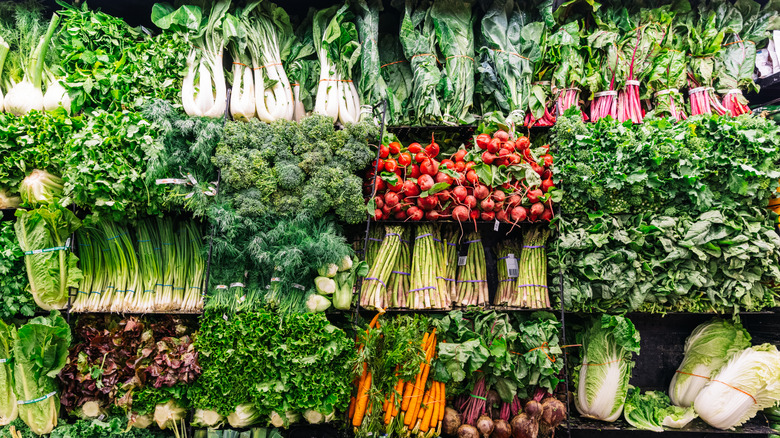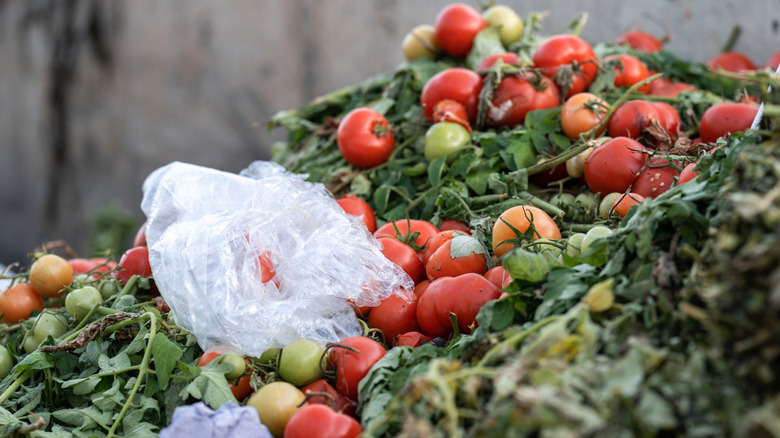What Sam's Club Does With Its Leftover Food Supply
As more consumers place greater importance on sustainability, it raises questions about what becomes of the leftover food supplies at large companies. Unfortunately, tons and tons of unsold and expired (though still very valuable) products get sent to landfills. In fact, folks in the United States create over 92 billion pounds of food waste annually, according to Feeding America. But at least some retailers, like Sam's Club, are doing their part to reduce that number.
Much like what Whole Foods does with some of its leftover food supply, Sam's Club donates items that are still considered safe to eat to local food pantries as well as larger charities. As a matter of fact, Sam's Club and its parent company Walmart are among Feeding America's biggest donors, having collectively given over 7.5 billion pounds of fresh food to the organization. But what they do with expired food that's no longer fit for human consumption is really innovative. Thanks to a partnership with an organics recycling company called Denali, Sam's Club uses specialized technology that works to separate organic foodstuffs from their packaging so they can be reused in the agricultural sphere.
If you can't donate, repurpose!
The depackaging technology introduced by Denali can be found in upwards of 1,400 Walmart and Sam's Club locations. Employees must simply toss expired groceries into a machine that does the work of shredding and separating organic food materials from plastic and paper packaging. This not only cuts down on the margin for human error, but also lightens the workload for employees, incentivizing them to better cooperate with the store's protocols surrounding food waste. This has allowed the company to recover 60% more in the way of organic food waste.
The separated organic matter can serve as feed for livestock and go into making compost for crops — or as farmers call it, "black gold." The depackaging machines can save up to 97% of organic food waste from the bin, which Denali will transform into as much as 500 million pounds of animal food, compost, and fertilizer each year. What isn't suitable for those uses may otherwise be anaerobically converted into biogas for energy. Global food waste produces an unbelievable amount of greenhouse gas, contributing more than most individual countries. So keeping leftover groceries out of landfills and turning them into an energy source sounds like a positive step.

